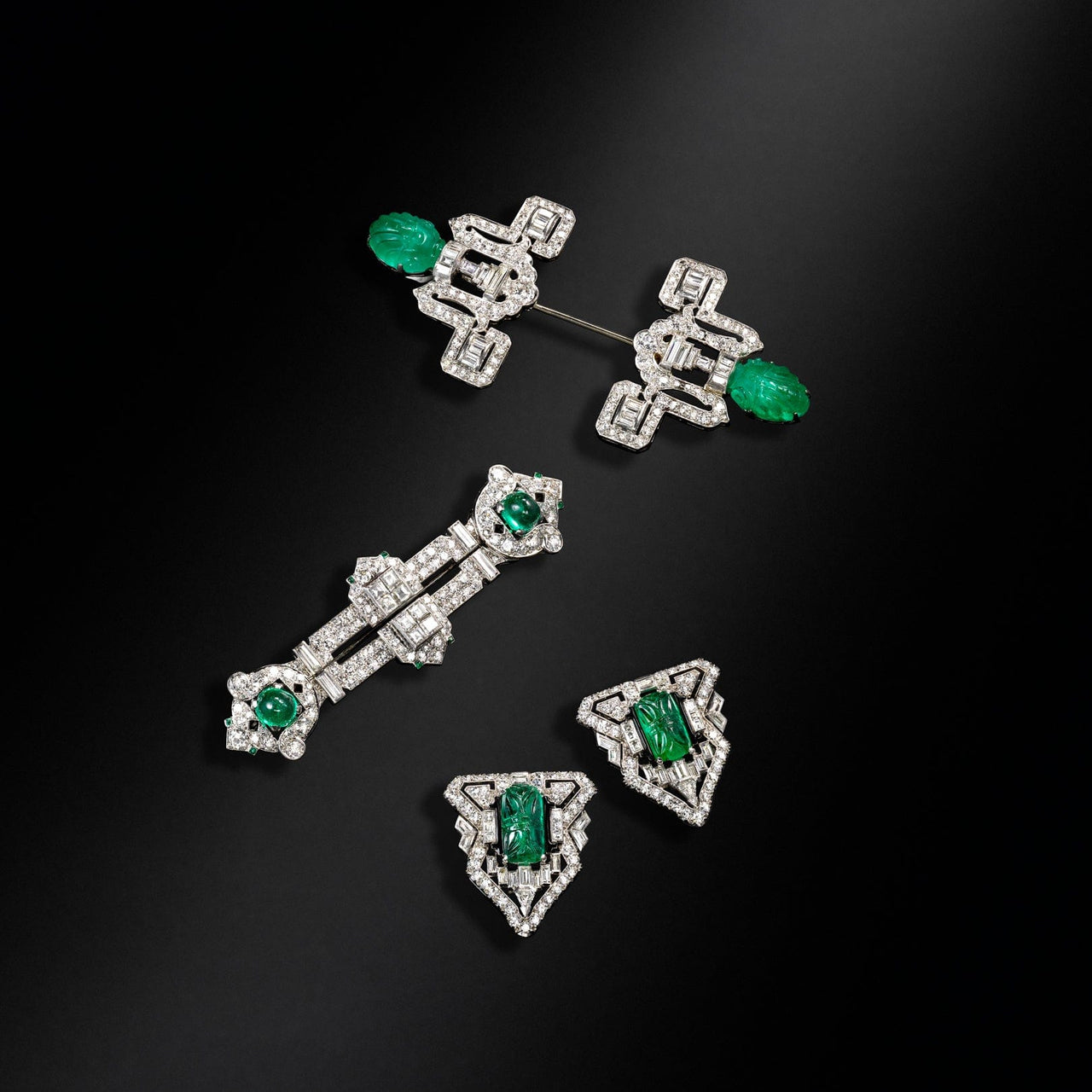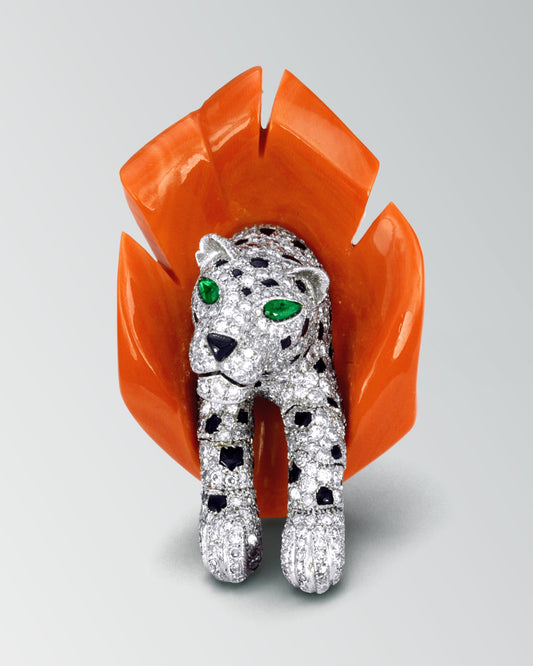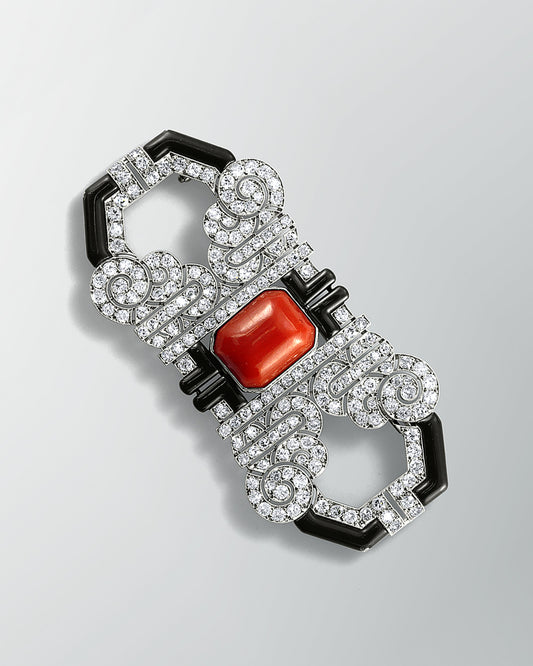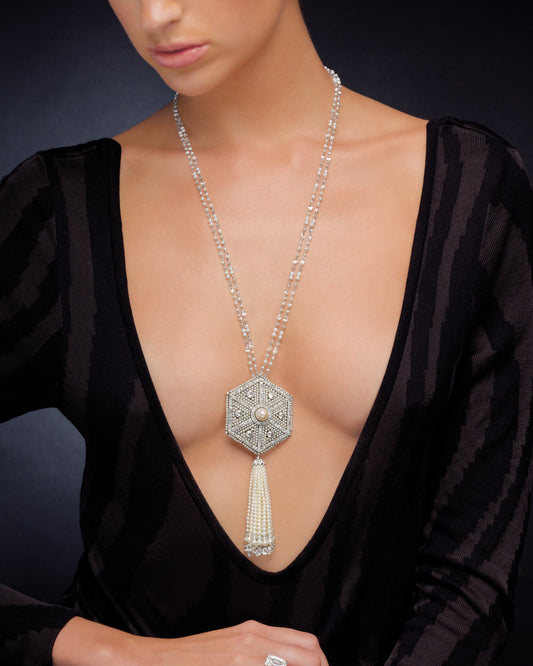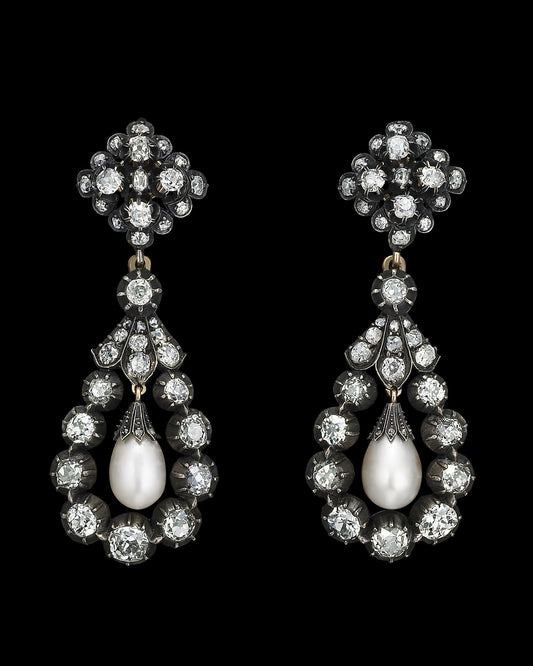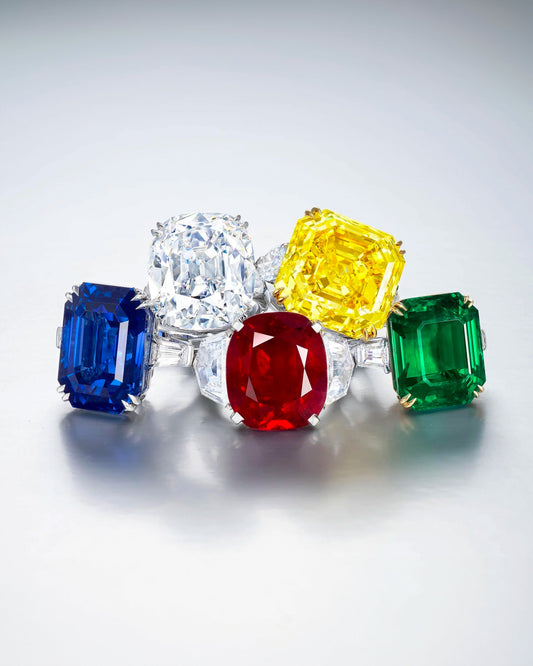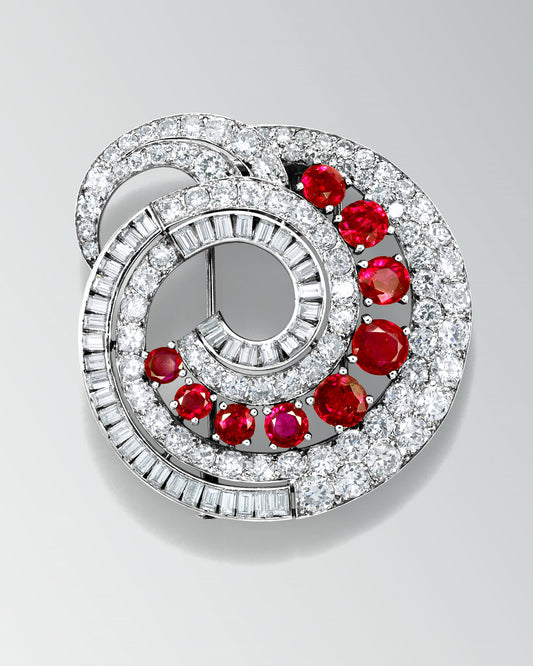
A statement piece
throughout the centuries
As the world prepares to witness the majesty and history of King Charles III’s Coronation, all eyes will also be on the magnificent jewels on display, including that most classic of jewels, the brooch. Traditionally pinned on the lapel, brooches are enjoying a renaissance of late, thanks in part to the royal family, and the late Queen Elizabeth II in particular, whose collection of heirloom brooches is believed to number close to 100.
A statement piece throughout the centuries, today this unique jewel is experiencing its own modern revival at Ronald Abram. The House has a large and ever-evolving collection of estate brooches, from signed jewels by pioneering names in the Art Deco style to beautifully crafted designs from the 1950s and Modern period.
Art Deco tutti fuitti brooch by Cartier, circa 1935.
An Old Accessory Made New
By the time Ronald Abram had established his eponymous brand in Hong Kong in the 1980s, he was already well-versed in the world of estate jewellery. His particular taste for antique brooches - he favoured designs from the Art Deco and mid-century periods - was passed down to his son, JJ, who today is responsible for curating the brand’s estate collection. JJ admires these eras not just for the sleekness of their silhouettes but for their contemporary possibilities. They translate well to today’s woman, who prefers to wear a brooch as a fashion accessory, paired with business attire or a smart jacket.
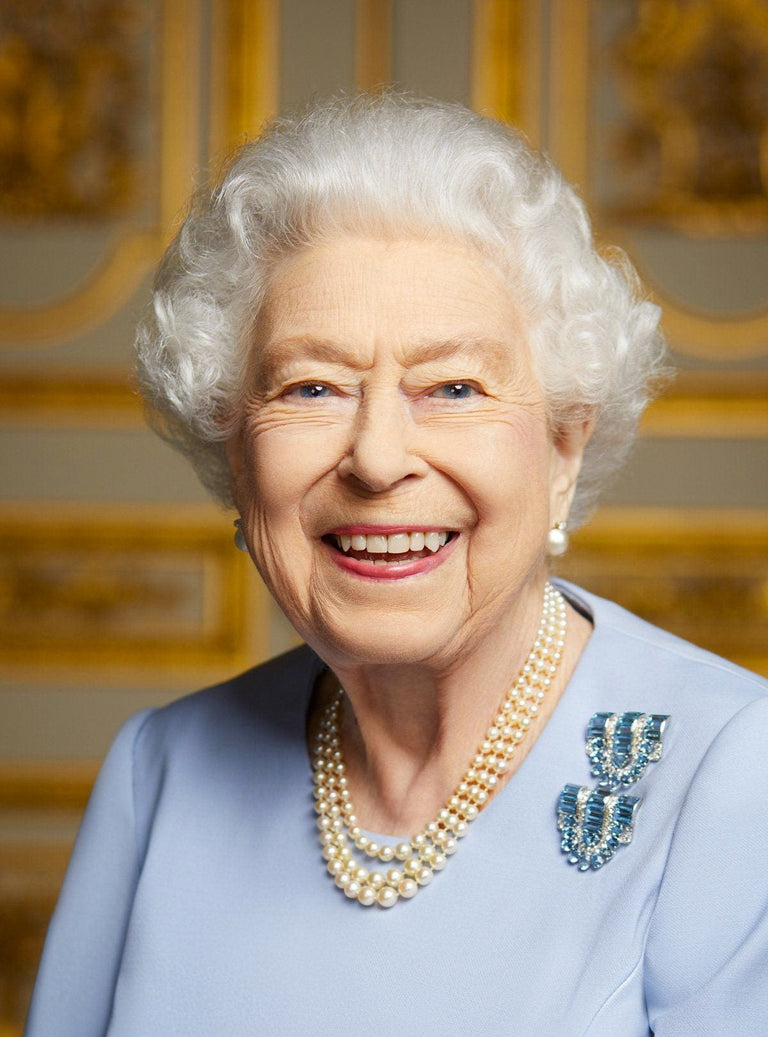
Double clip brooches
Some Ronald Abram clients are seasoned collectors who are drawn to pieces by established houses such as Cartier, Van Cleef & Arpels or Chaumet, while others have only recently begun considering the brooch as a modern, wearable jewel. JJ attributes this in part to the rise of double clip brooches, a favourite of Queen Elizabeth II, who owned an elegant aquamarine and diamond design by Boucheron which she wore stacked one on top of the other.
Photo credit: Ranald Mackechnie / Courtesy of Buckingham Palace
Authenticity and where to Find it
The process of acquiring new estate brooches is often labour-intensive, as is the authentication process. At Ronald Abram, it’s not unusual to spend several months authenticating a jewel. There are occasions when genuine estate pieces have been modified and modern components added, affecting the overall authenticity and value of the piece. This is often overlooked, but as experienced jewellers and estate dealers, Ronald Abram is well positioned to make those determinations.
Clients who are new to the world of estate jewellery can be understandably apprehensive about acquiring a jewel that might date back 100 years or more. How do you recognise good workmanship, for example? We always recommend examining the reverse side of a brooch to see how it is constructed - the craftsmanship should be refined and seamless, even on concealed parts of the jewel. A lack of precision, messy soldering or a clash in the quality of finish between the front and reverse of a brooch are all indications of either poor workmanship or that it has been altered.
Art Deco double clip brooch by Boucheron, circa 1930.
Signed vs Unsigned
Whether a piece is signed or not has the most impact on the value of an estate jewel, however this is closely followed by the workmanship and quality of the gems. To ensure our estate jewellery is exactly as described, every piece goes through a rigorous vetting process in which the workmanship and the stones are closely inspected, with our rarest and most valuable brooches certified by a third party and accompanied by gemmological reports.
We thoroughly service all our estate pieces on arrival. Every effort is made to acquire pieces that are in excellent condition for their age, however it is reasonable for a brooch that has been worn over many years to show signs of wear and tear. If a brooch should require a minor repair or any of the stones are loose, we have extensive experience in the delicate restoration of estate jewellery.
Left: Art Deco diamond and pearl brooch, circa 1930. Right: Art Deco diamond brooch by Boucheron, circa 1937.
Our final piece of advice to clients is the same we always give any time they wish to add to their collection. Is it pleasing to the eye? This is your opportunity to explore which historical period, and styles from that era, appeal to you most. Then, is it wearable? We frequently see estate brooches that are beautiful but far too heavy to be worn with modern-day fabrics. But whether you are drawn to classic designs or prefer something a little bolder, an estate brooch has the ability to attract attention, and the process of choosing one is almost as enjoyable as deciding how you want to wear it.
We look forward to sharing with you some of our most significant new acquisitions in the coming months, including an Art Deco masterpiece signed by Tiffany & Co.
Discover our estate collection here.
